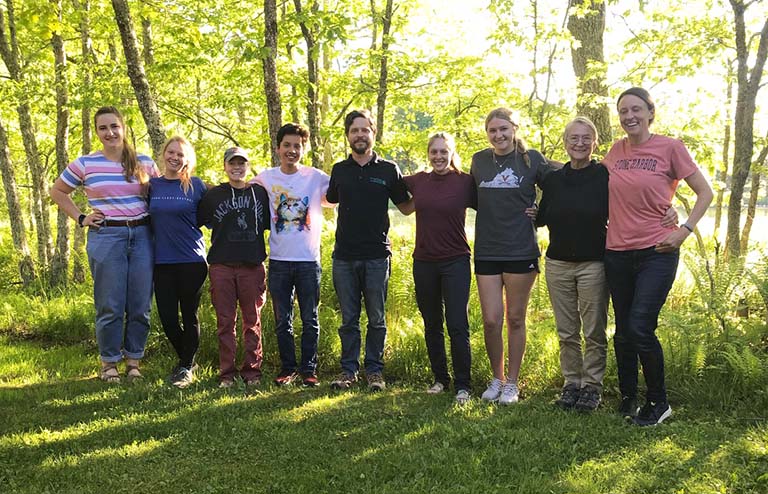Phenology is the study of cyclic and seasonal natural phenomena. Like most of MCB's research projects, those projects focusing on phenological aspects of the lives of migratory birds draw from multiple MCB research priorities. One such project investigates what determines the timing of reproduction.
Phenology
What determines the timing of reproduction?
Researchers: Adam Fudickar, Allison Byrd
Evolution has favored birds that time the events of their year to match the environment: retreat from temperate sites when the weather turns cold and food supplies are lean; return in spring when the world warms and food is plentiful for rearing young.
A good schedule may need to be finely tuned to specific resources such as caterpillars that are nutritious but quick to emerge and then to transform into adults…. You can’t be late.
We know that the right time may vary among birds that have broad geographic distributions. The best time to breed may come increasingly later the farther north a bird breeds.
What we don’t know fully is how birds know their best time? Is it determined genetically, or do they match their development to where they grew up but have the flexibility to change their timing?

Researchers Adam Fudickar and Allie Byrd are hand-rearing birds from a population of Dark-eyed Juncos that lives in the Appalachian Mountains of Virginia where breeding begins early in the year. Some of the birds are being reared on Alaska day lengths and some on Virginia day lengths. If genes determine timing of reproduction, the rearing day length will have no effect on their timing next spring. But if day length determines timing, then the birds will vary in timing despite their common heritage. Stay tuned.


